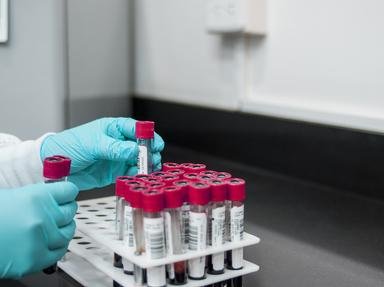Quiz Answer Key and Fun Facts
1. One of the most basic functional groups involves only carbon-carbon double bonds. What is this group called?
2. Perhaps most well known for its presence at parties, this functional group consists of OH bonded to an R group ("rest of the molecule").
3. Simply consisting of a C to O double bond (with two R groups bonded to the carbon), this functional group is present in many sugars.
4. The carboxylic acid functional group is called an "acid" because of a carbon to nitrogen triple bond.
5. Quite simple, this group consists of a nitrogen atom bonded to three R groups.
6. Also a woman's name, this functional group consists of a carbon double bonded to one oxygen and single bonded to another (where both the single-bonded oxygen and carbon are bonded to R groups).
7. An ether is one of the simplest functional groups, with a general formula of R-?-R. Which atom fills in the place between the R groups, and because of its difference in electronegativity from carbon, creates a dipole?
8. This aromatic, planar ring of six carbons with an R group bonded to one of them is one of the most important groups for its numerous lab and practical uses.
9. How many nitrogens make up an Azide functional group?
10. And to finish off this quiz, which functional group consists of a carbon double bonded to an oxygen and single bonded to a chlorine atom (with an R group too!)
Source: Author
goober123
This quiz was reviewed by FunTrivia editor
WesleyCrusher before going online.
Any errors found in FunTrivia content are routinely corrected through our feedback system.


